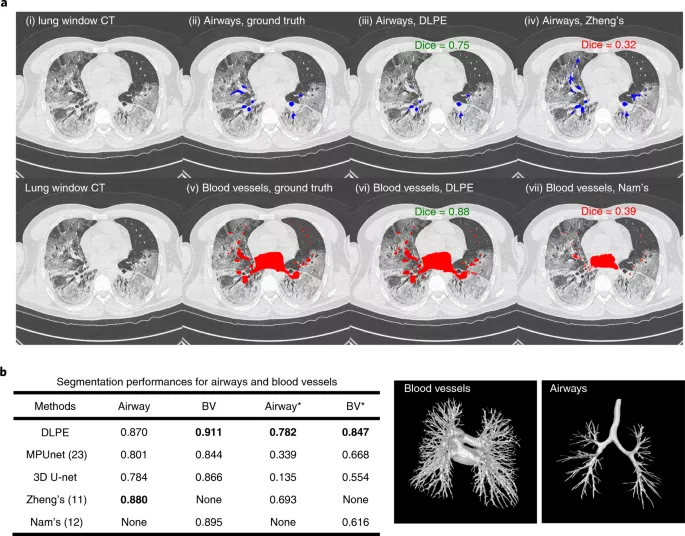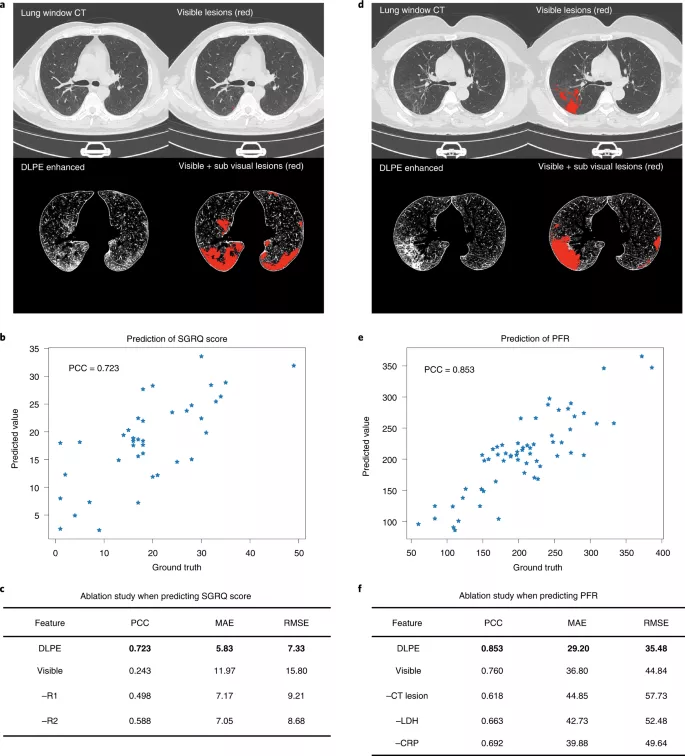Scientist of King Abdullah University of science and Technology (kaust) development A new computer-aided diagnostic tool can help overcome some of the challenges of monitoring lung health after virus infection Like other respiratory infections, covid-19 can cause lasting damage to the lungs, but doctors have been trying to visualize this damage. Traditional chest scans cannot reliably detect signs of lung scars and other lung abnormalities, so it is difficult to track the health and recovery of people with persistent breathing problems and other complications after covid.

The new method developed by kaust -- called "deep lung parenchyma enhancement" (dlpe) -- superimposes artificial intelligence algorithms on standard chest imaging data to reveal previously unrecognizable visual features and indicate lung dysfunction.
Gao Xin, a computer scientist and computational biologist, said that through dlpe enhancement, "radiologists can find and analyze new sub visual lung lesions". He added that the analysis of these lesions can then help explain the patient's respiratory symptoms, "allowing better disease management and treatment.".
Gao Xin and his structural and functional bioinformatics team and members of the computational bioscience research center, together with artificial intelligence researcher and current kaust Provost Lawrence carin and clinical collaborators from Harbin Medical University in China, created this tool.

This method first eliminates any anatomical features unrelated to lung parenchyma; Lung parenchyma is the main site of novel coronavirus induced injury. This means removing airways and blood vessels, and then enhancing the left images to expose lesions that might be missed without computer help.
Researchers used computed tomography (CT) chest scans from thousands of covid-19 inpatients in China to train and validate their algorithms. They used the opinions of radiologists to improve the method, and then applied dlpe to dozens of covid-19 survivors with lung problems in a forward-looking manner. They all experienced serious diseases requiring intensive care.
In this way, Gao Xin and his colleagues proved that the tool can reveal signs of pulmonary fibrosis in patients with long-term symptoms of covid, thus helping to explain shortness of breath, cough and other lung problems. He suggested that such a diagnosis would not be possible in standard CT image analysis.
"Through dlpe, we have proved for the first time that long-term CT lesions can explain this symptom. Therefore, the treatment of fibrosis may be very effective in solving the long-term respiratory complications of covid-19," he said
Although the kaust team mainly considered the recovery after covid when developing dlpe, they also tested the platform on chest scans collected from people with various other lung problems, including pneumonia, tuberculosis and lung cancer. The researchers showed how their tool can be used as a comprehensive diagnostic aid for all lung diseases. As Gao Xin said, this enables radiologists to "see what is invisible".